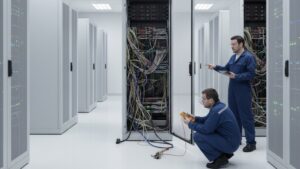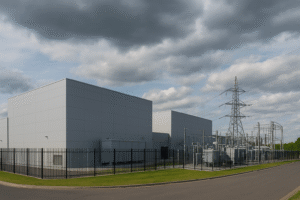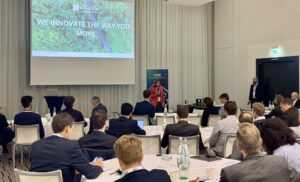Pharmaceutical manufacturing hides a complexity that energy meters alone can’t capture. A process can look efficient onsite yet carry a massive carbon burden upstream, locked inside every solvent and reagent it consumes. That’s why green chemistry LCA has become a decision-making tool rather than a reporting checkbox. It uncovers the true API carbon footprint across suppliers, process steps, and final yields. So, this changes how R&D teams judge sustainability performance. This article unpacks four high-impact areas that determine whether lifecycle analysis truly guides low-carbon route selection.
How do LCA Methodologies Capture Green Chemistry Trade-Offs in API Routes?
Accurate lifecycle analysis in pharma is more than a carbon calculator. It builds a process-wide emissions map that highlights trade-offs at every stage. A robust green chemistry LCA tracks where carbon comes from and how results depend on data units. It also tracks what hidden hazards a process creates and why supplier comparisons often fail. Understanding these elements is the foundation for credible route decisions:
Why Raw-Material Impact Often Dominates Over Energy in Chemical LCA
Energy efficiency gets most of the attention, yet published LCAs repeatedly show that raw materials can account for over half of the total API carbon footprint. Solvent production, reagent synthesis, and transport embed emissions long before they reach the reactor. Dichloromethane, for instance, carries several kilograms of CO₂e per kilogram purchased. It overshadows any energy savings achieved in a well-insulated process line.
Forward-thinking teams now trace supplier data in detail, linking every catalyst lot and solvent batch to verified emission factors. They often discover that a high-yield photochemistry step, chosen for process speed, brings in high-carbon solvents that raise overall impact. These insights shift procurement strategies and drive upstream substitution efforts. It reduces total emissions more effectively than optimizing on-site utilities.
Defining Consistent Functional Units for Yield-Normalized Route Comparison
Process teams often compare chemistry routes using per-kilogram emissions for intermediates. This figure hides real inefficiencies because yields fluctuate across purification and formulation. Studies report PMI ranges from 70 to over 400 kg inputs per kg API, and these values change dramatically when final dose yield is used instead of stepwise output.
Standardizing functional units at the dose-delivered level changes route rankings. A photochemistry option with high intermediate yield can lose more mass later, raising the lifecycle emissions above a biocatalytic route. Companies using dose-based units avoid misleading optimizations. They also gain a better picture of which synthesis truly minimizes the API carbon footprint across its full path to patients.
Reconciling Toxicity Profiles and Climate Emissions in LCA Frameworks
Cutting carbon emissions doesn’t always make a process environmentally safe. Some low-CO₂ reactions still create toxic by-products or use hazardous catalysts that harm ecosystems later. Many pharma teams now pair climate data with hazard scores, using frameworks like USEtox. It captures aquatic toxicity, persistence, and human exposure risks. Combining these factors in green chemistry LCA gives a complete picture of a route’s impact. It helps developers avoid solutions that only shift environmental problems elsewhere.
This dual scoring prevents hidden trade-offs. A biocatalytic process using rare metals may cut energy demand but create toxic waste for disposal. Photochemical methods can release persistent organics into water streams. By layering toxicity metrics alongside carbon, teams design chemistry routes that avoid exchanging one environmental problem for another. This strengthens both compliance and sustainability claims.
PCR Alignment for Pharmaceutical LCA Comparability Across Suppliers
Two suppliers can report different carbon values for the same API, not because one process is cleaner but because rules differ. Boundaries, allocation methods, and emission factors vary widely. Without clear, pharma-specific Product Category Rules (PCRs), LCAs from different suppliers don’t line up. This makes low-carbon sourcing harder to trust.
Industry coalitions are working on new PCR frameworks to set shared methods and scopes, so every supplier reports their data on the same basis. Once adopted, they will allow supplier footprints to be compared on equal terms, driving fair competition toward lower-carbon chemistry. Until then, companies must manually audit supplier assumptions, slowing sustainable sourcing and making green chemistry LCA a fragmented exercise instead of a trusted decision tool.
Also read: Recap: 3rd Net Zero Life-Sciences Summit
How do Photochemical, Biocatalytic, and Electrochemical Routes Compare on Yield vs Carbon Curves?
Choosing a synthesis route today takes more than looking at yield. The emissions profile for photochemistry, biocatalysis, and electrochemistry changes significantly with solvent choice, catalyst preparation, energy sources, and losses during downstream processing. A robust green chemistry LCA for these routes maps where yield gains are real and where they hide higher carbon costs. This section explores the most critical contrasts that every API developer needs to know:
Understanding the Emission Profile of Photochemistry for APIs
Photochemistry has gained traction for reducing reaction times and avoiding harsh reagents. Yet every green chemistry LCA shows that energy source, solvent load, and light efficiency define its carbon balance. A UV-driven reaction using dichloromethane, for instance, carries heavy upstream emissions from solvent production, outweighing the benefit of fast kinetics. If the energy source isn’t renewable, electric demand spikes carbon intensity further.
Process engineers now analyze photochemical routes step by step: they calculate embedded emissions of every solvent, factor in photon utilization efficiency, and model energy per mole of conversion. When these details are included, high-throughput photochemistry can show API carbon footprint reductions only under tightly optimized conditions. Without this full analysis, “green” claims for photochemical methods risk being misleading marketing rather than real carbon savings.
Biocatalysis Yields Emissions and Their Real Lifecycle Impact
Biocatalysis tends to seem like the green option since enzymes operate under mild conditions and don’t require toxic solvents. But biocatalysis yield emissions are variable; depending on how enzymes are made, the carriers upon which they’re supported, and how cofactors are recovered batch after batch. Producing enzymes at an industrial scale can generate significant carbon if feedstocks or fermentation energy are fossil-based.
High-yield enzymatic routes also require buffers and solvents downstream, which can offset some upstream gains. Modern LCAs evaluate each enzyme batch’s embodied carbon, utility demand for temperature control, and waste treatment needs. In many real-world cases, biocatalysis still delivers lower total emissions than traditional catalysis. Only detailed, process-level carbon tracking proves if the advantage truly exists. It also illustrates where small tweaks can reduce emissions even more. It includes recycling enzymes or employing renewable feedstocks.
Electrochemistry and Its Potential for Low-Carbon Synthesis
Electrochemistry provides another low-carbon synthesis route with cleaner oxidation and reduction reactions. It also comes without the need for toxic oxidants/heavy metals. Their carbon advantage depends entirely on the electricity mix, electrode life, and cell efficiency. A green chemistry LCA reveals that electrochemical synthesis powered by renewable energy can cut emissions dramatically compared to thermal routes. But if grid electricity is fossil-heavy, the process footprint can rival conventional chemistry.
Detailed lifecycle models capture additional factors often missed: electrode manufacturing emissions, electrolyte waste management, and energy consumed per mole converted. Companies testing electrochemistry for APIs now run scenario-based LCAs comparing renewable versus mixed grids, identifying where facility location and power sourcing determine true benefits. This data shapes investment decisions, preventing expensive transitions that don’t deliver on carbon reduction promises.
Plotting Carbon Trade-Off Curves in API Green Chemistry Decisions
Comparing routes requires more than a single emissions figure. Decision-makers now build carbon trade-off curves in API green chemistry, plotting yield against lifecycle emissions across multiple conditions. These curves highlight where incremental yield gains increase carbon footprint due to added solvents, higher energy intensity, or complex downstream separation steps.
For example, boosting photochemical yield with extra solvent may push total emissions above a lower-yield biocatalytic route. Electrochemistry may start with higher emissions at pilot scale but drop steeply when powered by dedicated renewables. Trade-off curves provide this visual, data-backed insight, showing where the real optimum lies. Without them, teams risk chasing the highest yield while silently raising total carbon costs—a mistake lifecycle data helps avoid.
What Emerging LCA Tools Inform Early-Stage Green Chemistry Route Choice?
Early decision-making determines most of an API’s eventual emissions. Once pilot work begins, process changes cost time and money. Teams now use specialized green chemistry LCA tools in the concept phase to predict which chemistry route combines the best yield and lowest carbon intensity. This section looks at four tool types shaping route selection, showing how they save effort while improving accuracy:
Quick Life-Cycle Profile Tools (FLASC, Q‑SA√ESS) for Solvent/Electro Route Screening
Screening tools like FLASC and Q‑SA√ESS help scientists test multiple synthetic ideas quickly. They combine pre-built emission factors for solvents, reagents, and reaction classes with basic process inputs. For instance, you can compare a photochemical oxidation with an electrochemical one in hours instead of weeks, viewing projected CO₂ per kilogram of API produced. These tools highlight high-impact materials before experiments begin. It points out where a change in solvent or feedstock could halve the API carbon footprint.
Many EU-based pharma groups now make these quick profiles a gatekeeping step before investing lab time. A route that shows carbon intensity above industry benchmarks rarely moves forward unless improvements are identified first. This structured use of early-stage LCA tools for API route selection ensures that early R&D aligns with net-zero targets without slowing innovation.
Early-Stage PMI vs Carbon Proxy: Correlation and Limitations in Route Selection
PMI calculators remain a reliable first-pass metric, adding up material used per kilogram of output. Teams often convert PMI to a carbon proxy using published emission factors for each solvent and reagent. This gives a rough emissions figure, letting developers see where high material use drives high lifecycle carbon. For example, a biocatalysis yield emissions profile may show PMI of 80 kg input/kg API, while photochemistry for APIs needs 120 kg due to excess solvents. Early comparison like this saves time chasing high-waste routes.
However, PMI ignores supplier energy mix and hidden losses in crystallization and filtration. A route with lower PMI can still have a higher API carbon footprint if it uses non-recyclable solvents or creates emissions during waste treatment. For this reason, PMI guides shortlisting only, with full green chemistry LCA validation following before any process locks in.
Integrating Real-Time Process Telemetry with LCA Models for Scalable Chemistry Validation
Data from lab instruments and pilot reactors now feeds directly into live LCA models. Flow meters, temperature sensors, and waste logs update emissions estimates instantly. This makes it possible to see in real time how a parameter change, such as raising reaction temperature or switching to another solvent, affects total carbon per batch. A developer testing photochemistry for APIs can watch how photon efficiency and energy use reshape emissions profiles compared to a biocatalysis yield emissions benchmark.
This integration closes the gap between theory and reality. Teams no longer wait months for static lifecycle reports. Instead, they validate assumptions while experiments run, ensuring that sustainability is part of daily decision-making. These early-stage LCA tools for API route selection create feedback loops that steadily improve both carbon prediction accuracy and route performance.
Predicting Downstream Impacts: Bridging Cradle-to-Gate to Cradle-to-Grave Uncertainties
Many early LCAs stop once the crude API leaves the reactor. It overlooks the emissions from purification, formulation, and packaging that follow. This blind spot can double final emissions. Advanced models now extend estimates through the entire lifecycle. They predict energy required for solvent recovery, chromatography, drying, and even refrigeration during storage. A photochemical process with clean conversion may still carry a heavy burden downstream, raising final API carbon footprint well above early expectations.
By bridging cradle-to-gate and cradle-to-grave data, developers avoid false positives on “green” routes. They can see when a supposed low-carbon option performs worse after full processing. These expanded models are becoming standard across EU pharma R&D teams, as regulators and investors expect credible emissions numbers early. When paired with carbon trade-off curves in API green chemistry, these tools ensure that route selection decisions truly reflect long-term environmental performance.
How do European Regulatory & Enterprise Reporting Pressures Steer Green Chemistry LCA Decisions?
European policies and market dynamics are no longer just background noise. They now actively shape how pharmaceutical companies choose their manufacturing routes. As ESG frameworks expand, and procurement practices rely on carbon data, green chemistry LCA is transforming from an R&D tool into a commercial differentiator. This section explains how these pressures are rewriting the rules for API route selection, supplier competition, and product labeling across Europe:
EU ESG and TNFD Frameworks Demanding Eco-Toxicological Data Tied to Emissions
EU sustainability frameworks such as CSRD, ESG disclosures, and TNFD expect far more than carbon totals. Companies must now report chemical toxicity, water pollution potential, and ecotoxicological impacts linked to every API manufacturing step. A green chemistry LCA that only calculates CO₂ equivalents is no longer considered credible. For instance, a photochemical reaction with lower energy use can still lose ESG points if it produces persistent organics that harm waterways.
As a result, R&D teams map both carbon and toxicity factors for every route. They merge USEtox or GreenScreen scores with carbon trade-off curves in API green chemistry to ensure low-carbon claims withstand regulatory reviews. This forces process chemists to design routes that cut emissions without adding ecological burdens, avoiding penalties in ESG scoring and costly project reworks later.
Supply-Chain Procurement Decisions Based on Standardized LCA PCR Metrics
Procurement teams are under pressure to select suppliers that meet net-zero and compliance goals. Buyers increasingly demand LCAs that follow standardized Product Category Rules (PCRs). It makes emissions claims comparable. When suppliers calculate API carbon footprint using harmonized PCR metrics, buyers can confidently rank them on environmental performance instead of marketing promises.
In practice, this reshapes sourcing contracts. A supplier offering 20% lower emissions with PCR-backed data now beats a competitor who cannot validate their claims. EU initiatives are accelerating this trend, forcing every supplier to adopt green chemistry LCA early in development to stay in bids. This procurement shift drives upstream investment in cleaner solvents, biocatalytic routes, and solvent recovery systems to win long-term partnerships with pharma buyers.
Comparing Routes Within Multi-Supplier API Networks: Who Supplies the Lowest Carbon Route?
Large pharma companies often buy the same API from multiple suppliers across regions. EU market scrutiny now pushes them to compare each supplier’s process data route by route. A biocatalysis yield emissions pathway in Asia may outperform a photochemistry for APIs route in Europe if it uses renewable feedstocks and fewer solvents. With standardized LCAs, buyers can see these differences clearly.
This transparency creates competitive pressure across entire networks. Suppliers lacking verifiable, low-carbon processes risk losing purchase volumes to greener competitors. Procurement teams increasingly ask for LCA of photochemical vs biocatalytic API routes before awarding contracts. It reshapes how global supply chains operate. Lifecycle data now decides who grows market share, making sustainability a commercial weapon as much as a compliance need.
Carbon Labeling of APIs: Credibility Challenges Without Consistent Chemistry-Level LCA Data
EU discussions on carbon labeling for pharmaceuticals promise visible climate data on packaging or in procurement catalogs. Yet, without detailed green chemistry LCA at the chemistry-route level, these labels can differ by 30–50% between suppliers for the same API. Such inconsistencies undermine trust in the entire labeling effort and risk greenwashing claims.
Companies preparing for this future invest in route-specific LCAs validated by PCR frameworks. They gather supplier data on solvents, catalysts, energy sources, and downstream losses to create chemistry-level emissions footprints. This effort ensures future API carbon footprint labels withstand audits and give buyers reliable comparisons. Accurate labeling will reward innovators with cleaner, verifiable routes. It will also push laggards to overhaul high-emission processes or lose access to EU markets.
To Sum Up
Lowering the API carbon footprint through smart green chemistry LCA is one piece of a much larger puzzle. The road to net-zero in life sciences spans every link in the value chain: greener process chemistry, energy sourcing, resilient low-carbon supply networks, and transparent emissions data across global operations. Companies that lead here won’t just meet targets; they’ll define how medicines are made sustainably for decades to come.
The 4th Annual Net-Zero Life Sciences Forum (4–5 November 2025 in Düsseldorf, Germany) brings together senior leaders from R&D, manufacturing, procurement, energy, and sustainability functions to tackle this challenge collectively. Discussions move beyond individual technologies or departments. It will focus on how the entire sector transforms to meet net-zero goals without slowing innovation or patient access. If your organization wants to play a decisive role in shaping this future, this is the room where those strategies take form. Register now!




